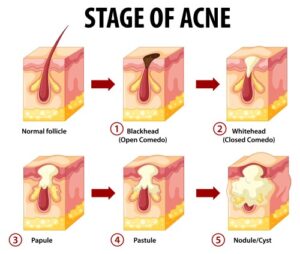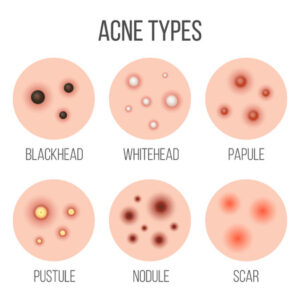Acne is a skin condition that occurs when your hair follicles become plugged with oil and dead skin cells. It causes whiteheads, blackheads or pimples. Acne is most common among teenagers, though it affects people of all ages. Effective acne treatments are available, but acne can be persistent

Acne comes in many variations and medical names. But the most commonly used term is: (youth) pimples or acne vulgaris. The characteristics of acne are also well known: blackheads, red bumps and sometimes significant subcutaneous inflammation. As a result, even skin imperfections, such as red or brown spots and acne scars. Acne manifests itself in young and old, man and woman. But it is almost always just as annoying and disturbing. We understand that like no other.
There are several factors that play a role in the development of acne.

How does acne develop?
Excessive sebum production and old skin cells cause clogged pores. The sebum cannot flow off evenly, and the bacterium propionibacterium acnes is added, which causes inflammation. Then acne develops. In other words: inflamed clogged pores. The result of excessive sebum production is seen by many people as an obstacle in daily functioning. The acne can develop especially in the face, on the chest and shoulders where the sebaceous glands are more prominent. Factors such as hormonal fluctuations, stress and diet can aggravate the complaints.












